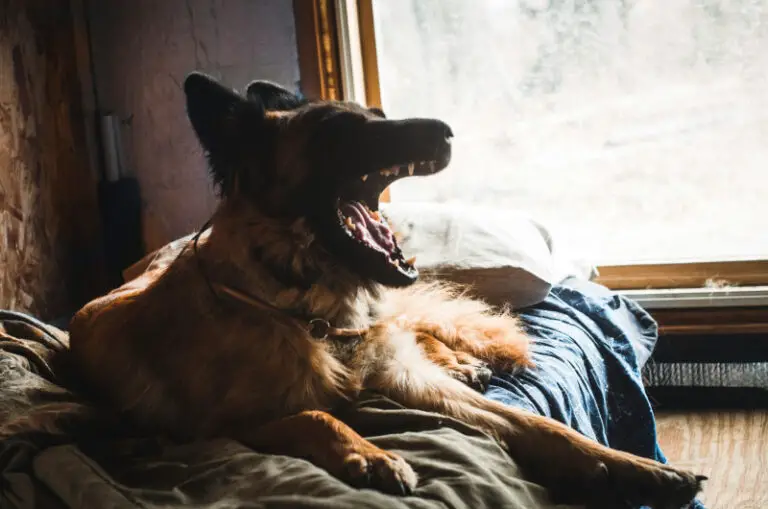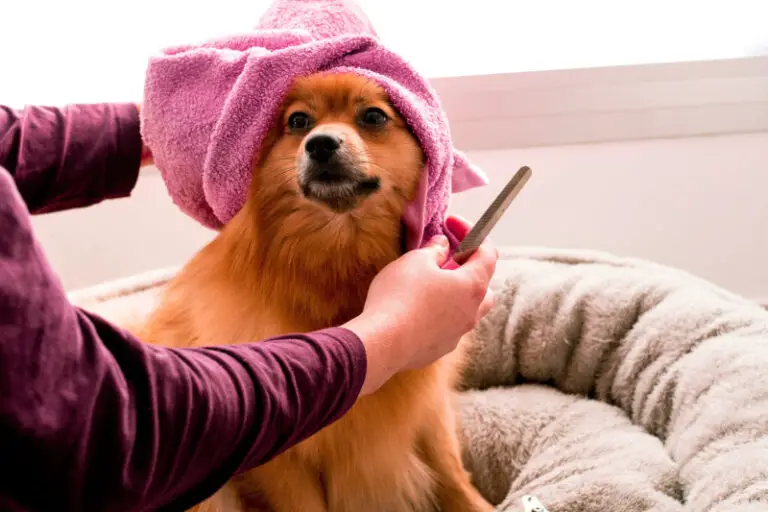Flea control is just as important for you as it is for your pet, but it’s known that once they’ve settled in, these little invaders can be very difficult to get rid of. Looking for a flea repellant but want to avoid commercial products and their harsh chemicals? You probably already have the solution in your kitchen. Vinegar for fleas on dogs is a good option to consider.
Endowed with excellent disinfectant properties, vinegar can help you prevent and kill fleas on your dog quickly, safely, and effectively.
Why is vinegar used to eliminate fleas? How to get rid of fleas naturally with vinegar? What is the best way to use it? Should a particular type of vinegar be used? Keep reading below to learn all this…and more.
Note: It is cautioned that vinegar may not be effective in combating a serious flea infection. It is usually recommended to control cases that range from mild to moderate. If the infection is severe, you will most likely have to resort to other deworming products.
Table of Contents
How to get rid of fleas naturally with vinegar?
Let’s start by briefly talking about the flea-fighting power of vinegar. Many wonder why vinegar is used to combat fleas, and the answer is very simple. Like many pests, fleas hate the smell and taste of the acetic acid in vinegar; that is why they will do everything possible to flee and avoid it.
In addition, apple cider vinegar specifically is said to help balance a dog’s internal pH, and fleas don’t like that either; Vinegar creates an acidic environment outside the animal while promoting alkalinity inside its body.
That said, let’s see how you can use vinegar as a home remedy to disinfect a dog with fleas. Among the most common methods of use are:
- The application of a solution of water and vinegar in equal parts (with spray)
- The bath with warm water, vinegar, and neutral detergent Dawn
- The application of apple cider vinegar, baking soda, and salt
- Adding apple cider vinegar to drinking water
1. Water and vinegar spray
Undoubtedly, a quick and easy option to apply. You will only need:
- White vinegar or apple cider vinegar (either can work, although some dogs are known to tolerate the smell of apple cider vinegar better)
- Water to time
- A container with spray
- Preparing this remedy is very simple. You just have to mix the water and the vinegar in equal parts and shake the container so that they are well integrated. It is recommended to spray the dog’s fur with vinegar spray every few days, applying more generously if you have to bathe it.
Steps:
- Once you’ve sprayed the dog with the vinegar solution, use your hands to work the vinegar into its fur well.
- Now let the vinegar dry, don’t rinse it off.
- After about 20 minutes, use a fine-tooth comb (lice tooth) and gently run it through the hair to help remove as many fleas as possible.
- To achieve better results, it is recommended to repeat the same procedure every two days. It’s also a good idea to spray bedding, rugs, and furniture as a preventative measure.
Tips and Warnings to Consider Before Spraying a Dog with Vinegar
- Be sure to check your dog for any open cuts or sores. Applying vinegar to very irritating bites can be painful for the pet.
- Avoid spraying the vinegar water on your nose and eyes; this will cause burning and irritation.
- Keep in mind that if you want your pet to accept this new flea routine, then he can’t associate it with any discomfort.
- The spray bottle you use must be completely clean; that is, it cannot contain traces of a previous product or chemical. Vinegar is an acid and can react with other substances.
- Some owners prefer to apply the vinegar solution with the help of a cloth, instead of the spray.
- Simply soak a cloth or towel in the liquid and press it directly onto your skin. With this method, you can get better access to the fleas that are more hidden inside the hair, as well as a more careful application in case there are injuries that you want to avoid.
2. Vinegar Bath and Dawn (Dish Detergent)
Much has been said about the popular household detergent as a remedy to combat fleas in different pets. Although it will not make them disappear as if by magic, the truth is that it can help eliminate them.
It should be noted that Dawn brand dish detergent has a neutral pH, which means that it is not aggressive to the skin of humans and dogs.
Instead of using both products separately, consider combining vinegar and Dawn detergent for a more powerful flea-fighting combination.
Steps:
- Fill a bathtub or bucket with warm water and pour in ½ to 1 cup of Dawn to create sparkling water. Next, add ½ to 1 cup of the vinegar of your choice.
- Bring the dog in to soak for at least 5 minutes. Be sure to give him a good bath and thoroughly clean his fur. The idea is to suffocate the fleas so that they have no choice but to get out.
- Once you’re done bathing your pet, use a lice comb and finish removing any invaders that may be left behind.
3. Apple Cider Vinegar, Salt, and Baking Soda Spray
Similar to the basic spray of water and vinegar, this method can help you eliminate fleas, only here we will be taking advantage of the properties of salt and baking soda. It is a more powerful and completely safe alternative.
Ingredients:
- 200ml apple cider vinegar
- ½ teaspoon sea salt
- ½ teaspoon baking soda
- 2-3 teaspoons of warm water
Steps:
- Pour the ingredients into a spray bottle and shake to mix well.
- Spray it on the pet and let it sit for at least 10-15 minutes.
- After that time, rinse your dog with warm water and finish by combing all his fur with a fine-tooth comb.
- This remedy also helps eliminate ticks, mange, mites, and other common parasites in pets.
The effectiveness of the combination of salt and baking soda to kill fleas lies in the ability of both ingredients to dehydrate these invaders, including their eggs and larvae.
4. Vinegar in dog water
As we have already mentioned, fleas are repelled by the smell of vinegar. Adding 1 teaspoon of vinegar to your pet’s water bowl is also another way to combat them. If possible, always use apple cider vinegar.
Since some dogs can’t tolerate this taste, you may need to adjust the amount of vinegar you add to the water. As an alternative, you could give the vinegar in supplement form (capsules/pills), as the fleas will be repelled by the smell that radiates from your dog’s skin.
The additional advantage of this remedy is that it also acts as a natural deodorant and stimulates the animal’s immune system.
Although the consumption of apple cider vinegar is considered safe for dogs, it is important to consult the veterinarian if your pet has any chronic health condition.
Quick Answers to Frequently Asked Questions
What is the best vinegar to kill fleas?
All types of vinegar help prevent and fight infections caused by fleas, but it is normal for many owners to wonder which is the most effective vinegar for this purpose. Apple cider vinegar or distilled white vinegar?
The good news is that both options are equally effective at repelling fleas. Both kinds of vinegar contain acetic acid, a compound to which this effect is attributed. Of course, it is no less true that most owners prefer to use apple cider vinegar because it seems to them to be a less aggressive and healthier ingredient for their dogs.
Will my dog smell vinegar?
The vinegar smell may linger for a few hours but will fade as the hair dries. One way to mask the scent a little is to add 1-2 drops of an essential oil suitable for dogs, much better if it also has flea repellent action. A good candidate is lavender essential oil.



